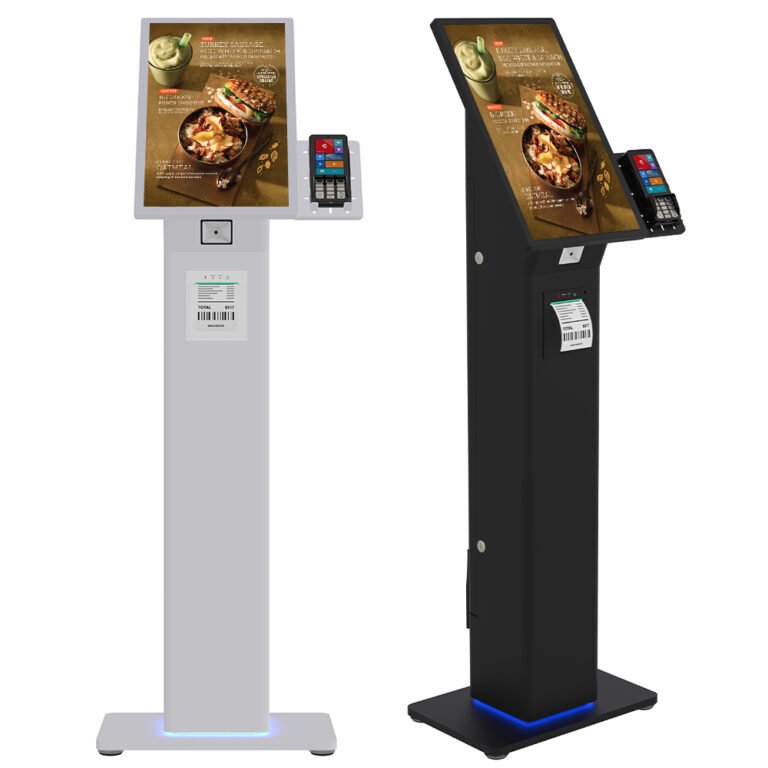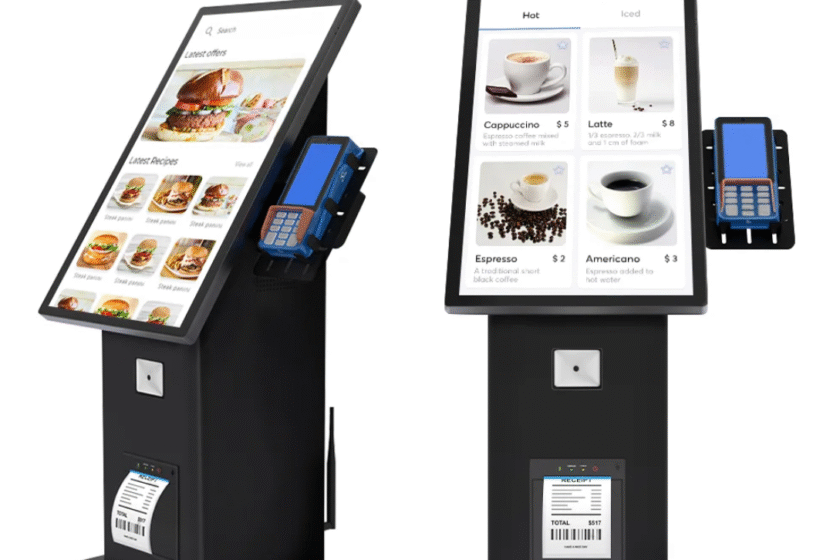How Does a Restaurant Self Service Kiosk Boost Profits by 30%?
The quick-service restaurant (QSR) and fast-casual dining sectors are undergoing a profound digital transformation, moving away from traditional counter service toward high-efficiency, personalized ordering systems. At the forefront of this revolution is the restaurant self service kiosk, a sophisticated digital signage solution that is fundamentally altering operational workflows and customer interactions. It is far more than a simple electronic menu; it is an integrated platform designed to optimize the entire ordering process, from customized selections to payment finalization. For digital signage product users and restaurant owners, understanding the strategic benefits of implementing a restaurant self service kiosk is key to surviving and thriving in a competitive, labor-constrained market. This article will provide an in-depth analysis of the technology, economics, and customer psychology that underpin the success of these powerful automated terminals.
The Economic Imperative: Why the Restaurant Self Service Kiosk is a Profit Center
The initial investment in a restaurant self service kiosk is quickly justified by its ability to generate significant financial returns through optimized operations and intelligent upselling.

Driving Higher Average Check Size Through Digital Upselling
One of the most compelling reasons for deploying a restaurant self service kiosk is its proven ability to increase the Average Transaction Value (ATV). Unlike human servers, the kiosk is programmed to be a systematic, tireless upseller. As customers navigate the menu, the system employs psychological prompts: suggesting premium toppings, offering meal upgrades, or prompting the purchase of complementary items (e.g., “Add fries and a drink to make it a combo?”). This gentle, persistent encouragement is highly effective because customers feel less pressure from a machine than from a human employee. Consequently, many businesses report ATV increases between 15% and 30% simply by automating the ordering process with a restaurant self service kiosk.
Mitigating Labor Challenges and Improving Accuracy
In an industry perpetually challenged by high turnover and rising labor costs, the restaurant self service kiosk offers a critical solution. By shifting the transactional burden to the customer, the kiosk allows the existing staff to focus on food preparation, delivery, and guest interaction, which directly improves service quality and speed. Furthermore, since the customer inputs their order directly, the incidence of miscommunication and human error is dramatically reduced. Order accuracy is maximized, which, in turn, minimizes food waste, reduces the need for remakes, and improves overall customer satisfaction—all factors that contribute to increased profitability.
Revolutionizing the Customer Experience (CX)
The shift to a restaurant self service kiosk is a strategic move to meet the modern consumer’s demand for speed, customization, and control, transforming the dining experience itself.

Speed, Convenience, and Eliminating Line Anxiety
Customer satisfaction in QSRs is often dictated by speed. The kiosk allows multiple customers to place orders simultaneously, completely bypassing the single bottleneck of the traditional counter queue. This drastically reduces perceived wait times, a major cause of customer frustration. For customers who already know what they want, the restaurant self service kiosk provides an immediate, efficient route to place their order. For those who need more time, the digital platform allows them to browse the entire menu at their own pace, exploring complex customization options without the anxiety of holding up a line or feeling rushed by an employee.
Facilitating Extensive Customization and Clarity
Modern dining preferences often center on customization—from dietary restrictions and allergy concerns to complex build-your-own options. The digital interface of the restaurant self service kiosk handles this complexity with ease. Users can select from layered menus, visually confirm their choices, and immediately see the impact of their customization on the final price and nutritional information. This level of transparency and control builds confidence in the ordering process, empowering the customer to get exactly what they want every time, a crucial element of the modern digital signage experience.
Technical Requirements and Integration in Digital Signage
For digital signage professionals, viewing the restaurant self service kiosk as a specialized interactive display emphasizes the importance of hardware quality and seamless backend integration.
Hardware Durability and Payment Security
A kiosk designed for continuous public use in a restaurant environment must feature commercial-grade, highly durable hardware. This includes industrial-grade touchscreens that are easy to clean and resistant to spills, as well as robust internal computing components designed for 24/7 operation. Security is paramount, requiring integrated, tamper-proof payment modules that adhere to strict PCI compliance standards. The kiosk must also be equipped with reliable printers for order tickets and receipts. Therefore, the long-term ROI relies heavily on the quality and resilience of the chosen restaurant self service kiosk hardware.
Seamless Point-of-Sale (POS) Integration
The effectiveness of the restaurant self service kiosk is entirely dependent on its ability to communicate flawlessly with the restaurant’s existing POS system. This integration must be bidirectional: the kiosk needs to pull real-time menu data (including pricing and availability) and push finalized order details directly to the kitchen display system (KDS) or printer. A smooth API integration ensures that new promotions, out-of-stock items, or price changes are instantly reflected on the kiosk, maintaining accuracy and operational integrity. High-quality restaurant self service kiosk solutions prioritize secure and reliable network connectivity to guarantee continuous uptime.
Future-Proofing the Dining Experience with Data
Beyond the immediate operational benefits, the restaurant self service kiosk is a powerful data capture and business intelligence tool, essential for strategic future planning.

Generating Deep Customer Insights
Unlike traditional counter service, every interaction on the restaurant self service kiosk is recorded. This includes what customers browse but don’t buy, the combinations they create, their preferred modifiers, and their navigation paths through the menu. This data provides invaluable insights into customer behavior, allowing restaurant managers to optimize menu layout, identify which items are most effective for upselling, and tailor future promotions with greater precision. This shift to data-driven decision-making is a core principle of modern digital signage deployment.
Facilitating Personalization and Loyalty Programs
As technology advances, the restaurant self service kiosk is increasingly integrating with loyalty and customer recognition platforms. By allowing users to log into their loyalty accounts or input their phone number, the kiosk can pull up past orders for quick reordering and offer hyper-personalized suggestions or discounts based on their purchase history. This level of personalized service deepens customer loyalty and transforms the kiosk from a transactional tool into a personalized engagement platform, securing the business’s competitive advantage.
Conclusion
The restaurant self service kiosk is an essential piece of equipment for any modern dining establishment looking to optimize efficiency, maximize revenue, and elevate the customer experience. For digital signage users, the kiosk represents the pinnacle of interactive retail display—a device that increases the average check size through systematic upselling while simultaneously improving order accuracy and solving critical labor challenges. By investing in a robust, well-integrated restaurant self service kiosk, businesses are not just installing a machine; they are strategically future-proofing their operations and positioning themselves for sustainable growth in the automated QSR market.
Frequently Asked Questions (FAQ)
Q1: How much is the average increase in sales when deploying a restaurant self service kiosk?
A: While results vary, many QSRs report an average increase in the Average Transaction Value (ATV) ranging from 15% to 30%, primarily due to the kiosk’s effectiveness in systematic and pressure-free upselling and suggesting add-ons.
Q2: Does the restaurant self service kiosk replace staff members?
A: The kiosk rarely replaces all staff; instead, it reallocates them. It handles the transactional duties, allowing employees to be moved to higher-value roles, such as improving food preparation speed, maintaining cleanliness, or providing personalized customer support, which ultimately enhances overall service quality.
Q3: What makes the restaurant self service kiosk more accurate than human ordering?
A: Accuracy is improved because the customer inputs their order directly, eliminating the chance of mishearing or input errors by a staff member. The visual interface allows the customer to review their complex customizations before payment, significantly reducing the need for costly order




